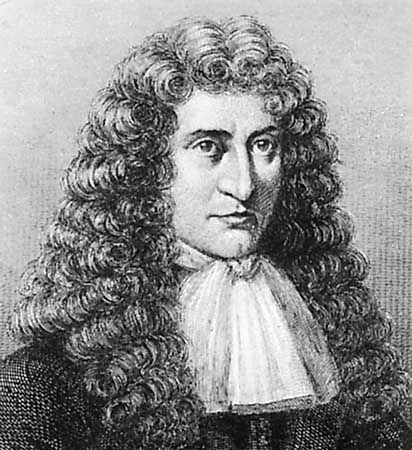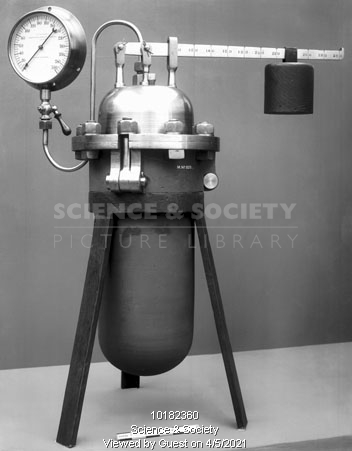I spent most of the long weekend in the kitchen, trying out new recipes, making new desserts, and of course, cleaning up too. Turns out the kitchen can be an incredible source of inspiration for ideas and scientific inquiry.
This week’s curiosity box explores
1 – Did the industrial revolution start from a kitchen?
2 – How does soap remove dirt?
3 – What is gluten? How does it build up?
1 – Did the industrial revolution start from a kitchen?

Denis Papin, a French mathematician, physicist, and inventor, is known for his steam digester – the precursor to the steam engine and consequently the industrial revolution.
The technology you find in a pressure cooker dates back to the 17th century. In the early 1670s, Papin and his partner moved to London after successfully completing experiments on a new type of air pump. In London, they partnered with Robert Boyle and launched similar experiments to further expand their newfound knowledge.
One air pump after the other, Papin’s experiments inspired him to work on a device that would cook meat faster and soften bones using heat and pressure. And that was the spark for the pressure cooker; he called it the bone digester.
Papin wrote, “Cookery is such an ancient art. The use thereof is so general and so frequent, and people have been so earnest upon the improving of it that it seems if any could be brought to perfection, this should be it.”
A New Digester or Engine for softening Bones (1681)

In 1679, Papin presented a working model of the bone digester. The physical principles that applied to the original device remain the same for today’s pressure cooker, even the instapot. The device impressed his peers, including Issac Newton and Robert Hooke and the Royal Society of London, which later commissioned Papin to write a multi-purpose book about the bone digester. The book served the purpose of a construction guide, an experiment log, and a cookbook.
And there was more
Papin was fully aware of the power of steam and the pressure cooker. He began visioning the other potential uses. After showing how steam can cook meat faster, he showed that steam can perform mechanical functions by attaching a piston. After moving base to Germany, he began experimenting more on this finding.
Papin, however, did not further expand on his experiment of moving pistons using steam. He did not believe in the practicality of things, or moreover, he was inclined on other experiments.
In 1712, Newcomen popped up with a practical application and showed a working demo of the first steam engine. A year later, Papin passed away. Newcomen claimed that his model was novel. How exactly this Newcomen came with the steam engine remains a question. Nevertheless, Papin’s invention gave him the nudge. Once in a while, it is good to rekindle long-forgotten legacies.
2 – How does soap remove dirt?
You must have seen how water and oil don’t mix. At a molecular level, water and oil are different because the former is polar and the latter is non-polar. The difference in molecular properties is the reason why the two liquids don’t mix together.
A similar phenomenon occurs between water and dirt/grease/oily substances that stick on utensils or your body. Using only water to wash them is not practical because of the same reason why water and oil don’t mix. Polar molecules mix with other polar molecules, while non-polar molecules mix with other non-polar molecules (remember this point)
We need a third element – Soap.
Soaps date back as far as 2800 BCE to Babylon. A short chemistry lesson is required to understand how soap works.
One can extract a chemical compound called Triglyceride from animal fat or vegetable oils. Through the saponification reaction process (i.e. adding a strong base like sodium hydroxide), Triglyceride is converted to glycerol and fatty acid salts (aka soap).

When you add soap to water, tiny spheres called Micelles are formed. As you can see in the picture, Micelles contain salt compounds stuck together like a sphere. The outer layer contains hydrophilic polar molecules (water-loving), and the inner tail-like structures include non-polar hydrophobic molecules (water-hating).

These micelles contact the dirt/oil/grease stuck on the utensil or your body. Immediately the dirt molecules get attracted to the tail-like structures inside the sphere because they are non-polar. With another wash, water picks up the Micelles (because the heads are polar, thereby attracts to the water) with the dirt, safe inside.
3 – What is gluten? How does it build up?
Somehow a lot of misconception occurred from the word of diets. People assumed that a gluten-free diet actually improves health. Well, in fact, that does the exact opposite (unless you are suffering from celiac disease). Remember the cake story? To ensure a cake has structure, bakers would have to compensate by having more fat and sugar to make gluten food more enjoyable.
Gluten is a group of wheat proteins that give the dough its structure. Wheat comprises glutenins and gliadins, barley contains hardens, rye has secalins, and oats have avenins.
When mixed with water, Glutenin and gliadin combine to form a substance known as gluten. Glutenin provides strength to the structure, while gliadin offers elasticity. Because of these properties, the dough has the stretchy capability to expand and trap air inside of them.
Just water and these two protein compounds combining do not give the big lump of dough we know. Through mixing, a third molecule called proteases present in the mix allows the protein properties to break a bit to enable the network to further expand. However, too much of it will not allow the mix to stay connected.
Watch the video below to have a look at how gluten looks like.
Oh my …..
So much in the kitchen !!!!!
Very interesting 👌
Very nice